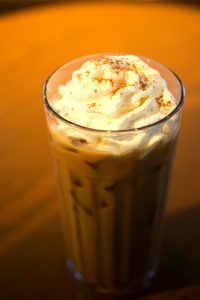In the last year, Americans have faced trauma unlike any in recent history: a global pandemic that has taken the lives of over 500,000 Americans, social isolation, a “once in a lifetime,” economic recession, an explosive racial justice movement, a tense national election and an attack on our nation’s Capitol have left most of us in shambles. It’s no wonder most of us have been searching for ways to cope with the stress and turmoil we’ve experienced on global, national, local and personal levels.
No two people’s responses to trauma are the same, meaning every individual copes differently, which causes people to cope in different ways: meditating, drinking, working out or to binging Netflix. Many people have turned to shopping, either in-person or online, amidst the pandemic as a means of coping with their situations or circumstances. Buying a few new pieces of clothing or a pair of shoes you’ve been eyeing is a perfectly acceptable way to handle the existential stress many are faced within these difficult times, but constantly clicking “add to cart,” can lead to a more serious problem.
Shopping is a widely popular American pastime, and something our culture widely encourages — seemingly every ad you stumble across online or on your TV is promoting a product and giving you the nudge to purchase it, our most-visited stores appear as advertisements on other websites we visit and we can get text and email notification from our favorite stores. There is a constant need to buy the newest technology or keep up with the hottest trends, and as social media platforms such as YouTube and TikTok have normalized shopping “haul” videos, or sharing every item of a particular purchase, it seems shopping is not only normalized but indirectly goaded by our peers and the expectations of our presence online.

What is Compulsive Buying Disorder?
Verywellmind.com refers to the addiction to shopping as “oniomania,” or an uncontrollable urge or desire to buy things, and is also known as compulsive buying disorder or compulsive shopping.
Compulsive buying goes far beyond the occasional splurge or shopping spree but is constant or regular purchasing despite whether or not purchases are necessary. Compulsive buying is not limited to just clothes or accessories — technology, cosmetics, medicine and even food and groceries can be bought compulsively.

The following can be classified as potential red flags of compulsive buying disorder:
- Regularly obsessing over making purchases
- Shopping to cope with stress
- Intense euphoria or “high” after making a purchase
- Making unnecessary purchases or buying items that go unused
- Maxing out or opening new credit cards
- Remorse or intense guilt after purchasing, but continuing to shop
Compulsive buying disorder is often linked to other mental illnesses such as depression and anxiety and can be traced to personal or hereditary history of other substance abuse issues.
Are You an Oniomaniac?
Oniomaniacs don’t just occasionally treat themselves to a couple of items at their favorite store or purchase a few additional things they don’t really need. Compulsive shoppers buy large purchases or ones that are considered expensive, and frequently.
Like addicts of any other kind, many oniomaniacs share certain traits or qualities, such as:
- Low self-esteem
- Seek approval from others
- Materialism
- Emotional distress or issues
- Poor impulse control
Compulsive shoppers are usually not financially stable enough to support their spending habits. They often shop well out of their means and forgo their budget for the sake of shopping.
Next Steps
If you or someone you know may be struggling with compulsive buying, don’t be afraid to seek help. This is a very real — and dangerous — addiction millions of Americans struggle with daily, so you are certainly not alone.
There are many support groups for shopping addicts both new and recovering, which is a great way to hold yourself accountable and meet others who struggle with this same issue. If you think you may need further help, call your therapist or search for one in your area who may specialize in addiction or abuse services.
You can also call the Substance Abuse and Mental Health Services Administration hotline at 1-800-662-HELP (4357) for an informational referral on where to go next.
Please remember that while compulsive buying may feel like a necessity or a social pressure, it truly can lead to serious financial strain or further abuse issues down the road.





